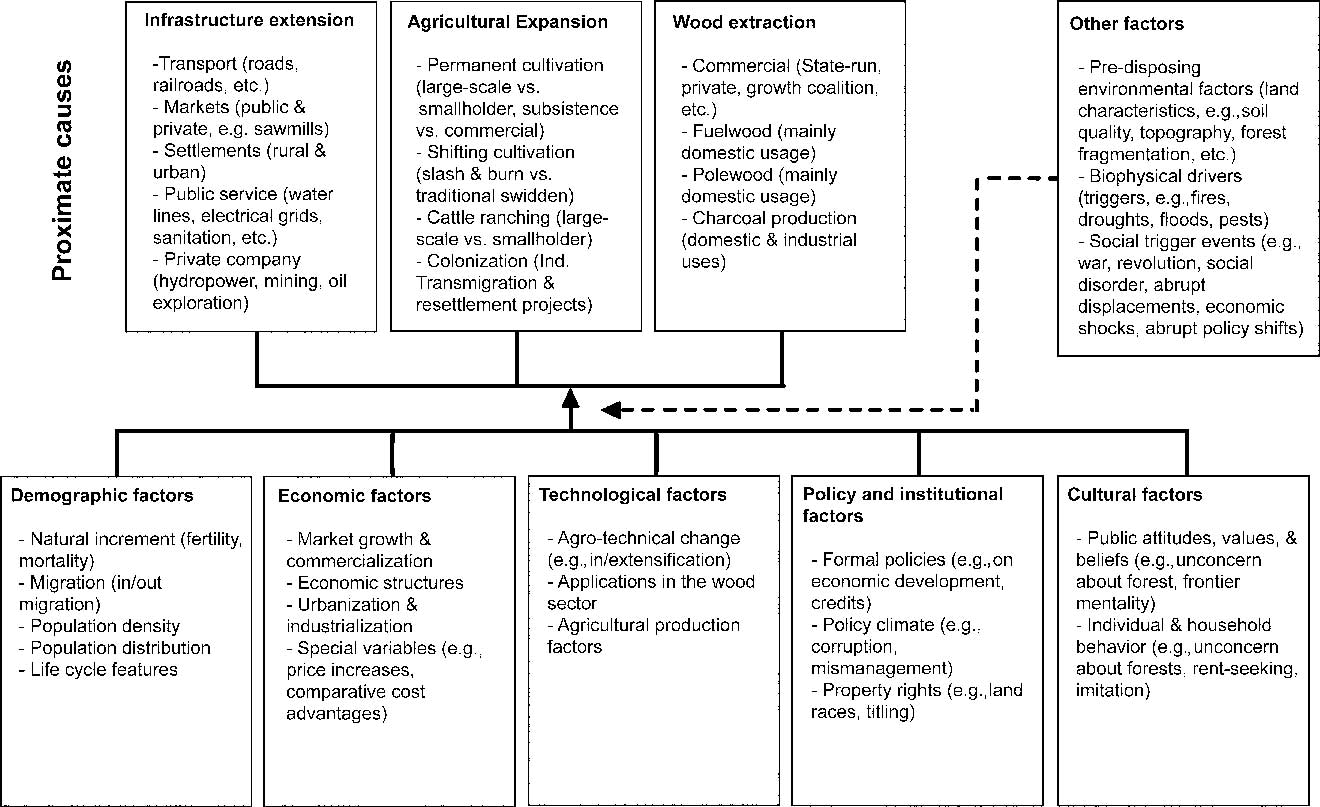| Previous | Return to table of contents | Search Reports | Next |
| « Back to weltagrarbericht.de | ||
282 | IAASTD Global Report

Figure 4-19. Indirect and direct drivers of land cover change. Source: Adapted from Geist and Lambin, 2004.
scenarios from the Global Scenarios Group (GSG) (Raskin et al., 2002), UNEP's Global Environment Outlook (UNEP, 2002), the Millennium Ecosystem Assessment (MA, 2005a) and some models from Stanford University's EMF-21 Study of the Energy Modeling Forum (e.g., Kurosawa, 2006; van Vuuren et al., 2006). Recent sector specific economic studies have also contributed global land use projections, especially for forestry (Sands and Leimbach, 2003; Sathaye et al., 2006; Sohngen and Mendelsohn, 2007; Sohngen and Sedjo, 2006) (Figure 4-20). Note that some scenario exercises are designed to span a range of diverse futures (e.g., SRES, GSG, and MA). For example, under the SRES scenarios agricultural land area could increase by 40% or decrease by 20% by 2050. Other scenarios focus on a single projected reference land-use characterization (e.g., GRAPE-EMF21, IMAGE-EMF21, GTM-2007). The more recent scenarios suggest greater agreement than under SRES or GSG, with agricultural land extent stable or growing by 10% by 2050. |
|
modeling is forthcoming that will directly account for the endogenous opportunity costs of alternative land uses and offer new more structurally rigorous projections (e.g., van Meijl et al., 2006). 4.4.3.2 Regional and local changes |
| Previous | Return to table of contents | Search Reports | Next |
| « Back to weltagrarbericht.de | ||